The Chapterhouse of the Domenican San Nicolò Monastery in Treviso, Italy, houses a 14th-century fresco of a cardinal wearing spectacles.

It’s the first known image of someone wearing spectacles in Western art. And they are also the first kind of spectacles—a rivet model perched on the end of his nose. These early spectacles [1] were initially worn by scholars and members of the clergy, and gradually became accessible to craftsmen and small business owners. Their invention was celebrated for enabling more efficient work, but their clumsy appearance was often the subject of caricature and satire. Seven hundred years later we are inventing other kinds of vision.
The trialling of Google’s Project Glass—a lightweight reticule turned wearable computer—in April 2013 heralded an array of reactions, from the awe-inspired and the zealous, to the sceptical and the alarmed. There are those compelled by the “coolness” of ambient computing, as a miniature semi-sheer screen hovers within sight, and there are the incredulous—who would want to wear such augmented prostheses in public?
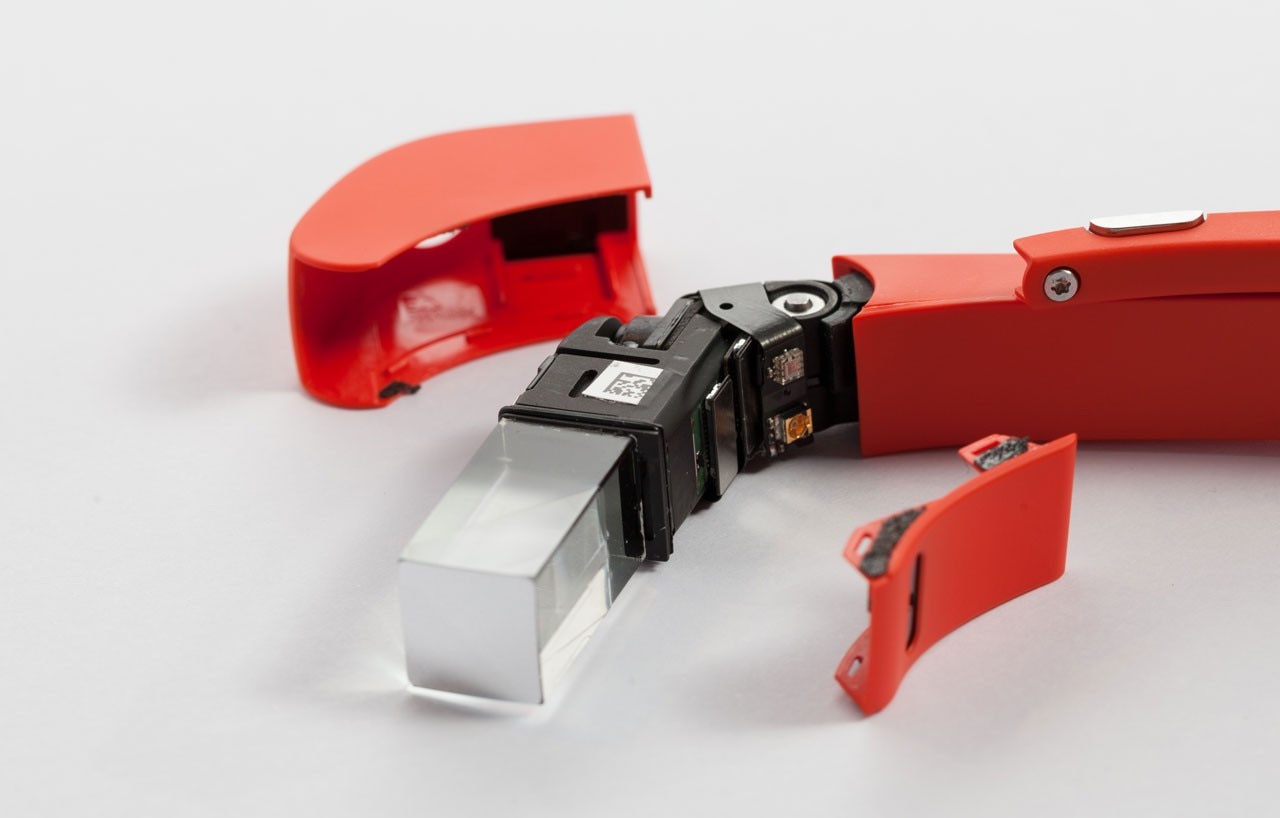
From justified concern for privacy and surveillance, to health anxieties (in contrast with the original invention, which would certainly enhance humans’ ability to see), are these the first “glasses” to risk damaging our eyes?
While wearable computing has been in development for decades, with Glass, Google is the first to bring augmented vision to the consumer space. There will be, and already are, other examples—Baidu Eye [2] in China and The Technology Partnership’s prototype [3] in Cambridge, UK. If the uptake of every technology that first incited both fear and wonder—electricity, telephones, moving images—is anything to go by, ubiquitous computing will become, well, ubiquitous. So why not that which intercepts your sight?
Just as the diffusion of eyeglasses in the Renaissance began with an elite set of Italian monks and cardinals,
so Google closely gate-keeps the spread of Glass through Valley technologists and their circles. The closely managed alpha launch called for a limited set of “Explorers” chosen for their responses to [#ifihadglass], issuing a kind of Charlie and the Chocolate Factory Golden Ticket effect, whereby scarcity creates desirability.
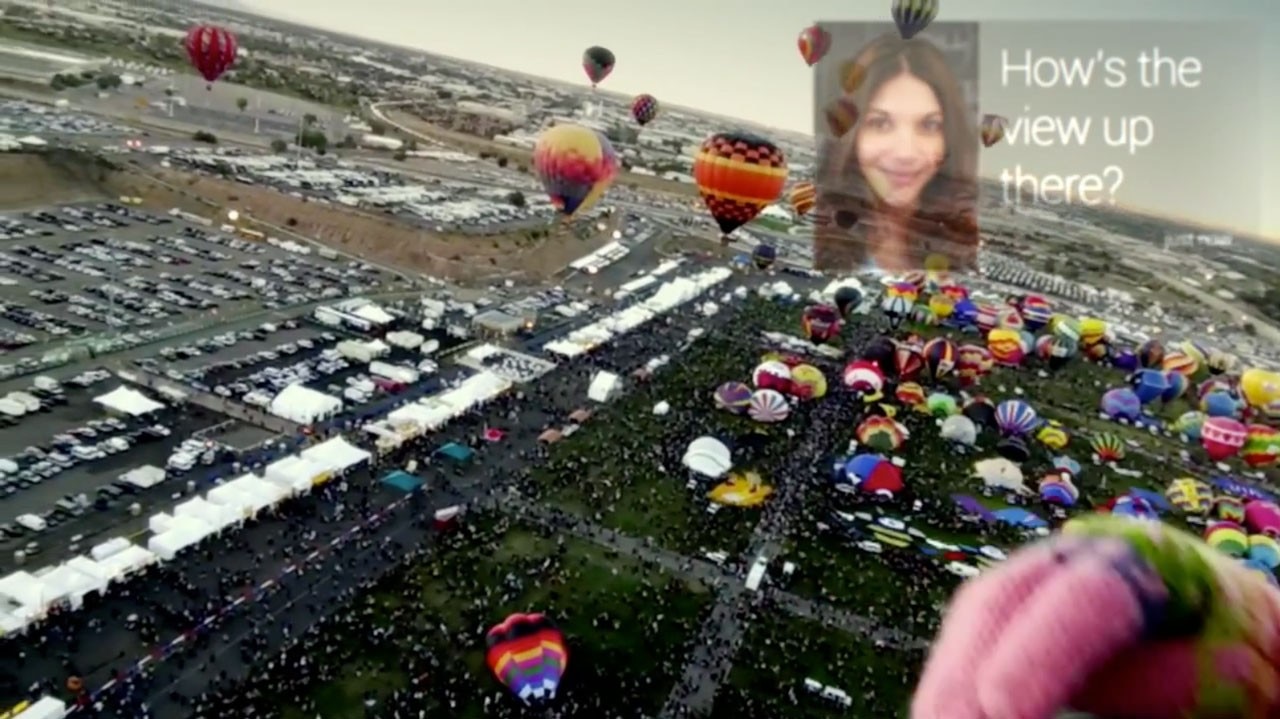
This provided the X Lab (Google’s secret research division) with a handpicked control group from whose footage and feedback they could learn. Limited press access minimised early criticism, while the tech community was excited to see the likes of William Gibson and Bruce Sterling sport an object straight out of speculative fiction. This veneer of exclusivity reflects the product’s private essence, as though Glass presents mirrorshades for a mirror-world [4] that exists exclusively for the wearer.
In The New Wounded: From Neurosis to Brain Damage, Catherine Malabou quotes Guillaume Apollinaire upon seeing his own X-ray: “How could it be! An X-ray was made of my head. I, a living being, have seen my cranium—is that not something new?” French theorist Stéphane Vial [5] remarks that technical revolutions shake “the structures of perception”. Indeed, Glass interacts with perception in ways that might skew and shape our experience:
Its controls require a deeply physical engagement from the user: an exaggerated head-nod to turn on, spoken word commands, albeit in strict, inflexible language (“OK Glass, take a picture”), not to mention repetitive eye focus in close proximity to the face.
It continues the pursuit of augmented reality vision and living, which alters our sense of space, place and being in the world.
It allows point-of-view photography and hands-free filming, with implications for image representation, as well as for our already disintegrated perceptions of distance in the digital age.
Each of these points involves technology brought closer to our senses—a stated aim of Project Glass. If technology is to be made more intimate, it must feel right—something that Google have emphasised in the marketing of the product, with the emotive promotional video How It Feels.
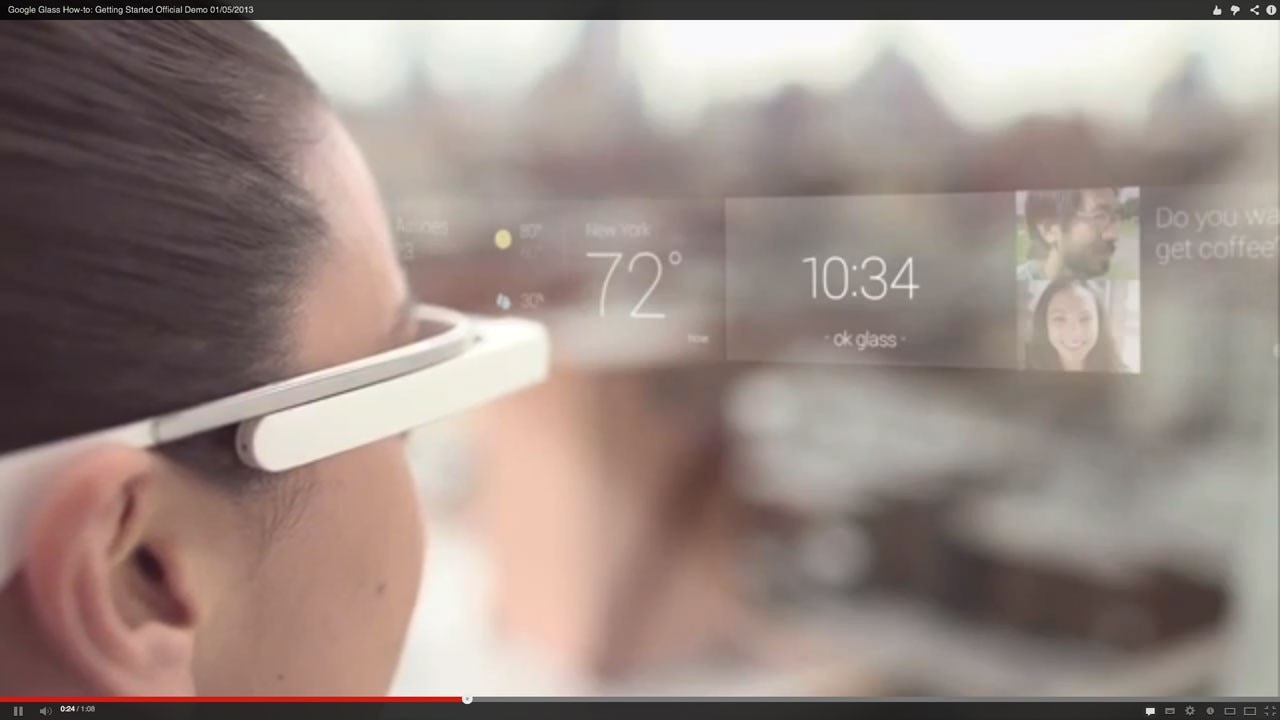
It is clearly not easy to create something light and sleek enough not to feel encumbering, that people will want to wear, while incorporating a chip, a camera, a microphone and a speaker into a headset. Early reports [6] express surprise at the elegance of the industrial design, as well as usability hiccups—a certain clumsiness to be expected with a novel gestural interface.
Glass advocates claim that its heads-up display will actually be less disruptive and more socially involving than heads-down smartphone use. But what it seems to offer us is convenient access to information that nonetheless takes up part of our attention. As the user focuses on his or her close-up screen, the world beyond loses focus. It is only if we interpret “seeing more clearly” as a metaphor for understanding the world in more detail that Glass might hold the potential to magnify our surroundings. Augmented or otherwise, we still only have one brain, two eyes.
What does it mean to be “augmented”? It says something about the ideologies of Wikipedia contributors that the explanation for augmented reality reads: “The technology functions by enhancing one’s current perception of reality.” Linguistically and conceptually, the idea of “augmenting reality” implies that the world needs additions that it was previously lacking; that data overlay is therefore a decidedly positive thing; and that there is a consensus on what this singular “reality” is. Of course, actual experience tells us that our realities are multiple, evolving, subjective and already rich with information. Pervasive computing enforces the overlap between physical and digital realms—realms that we already experience as intersecting. As Cyborgologist David Banks writes, we are “always already augmented”. [7]
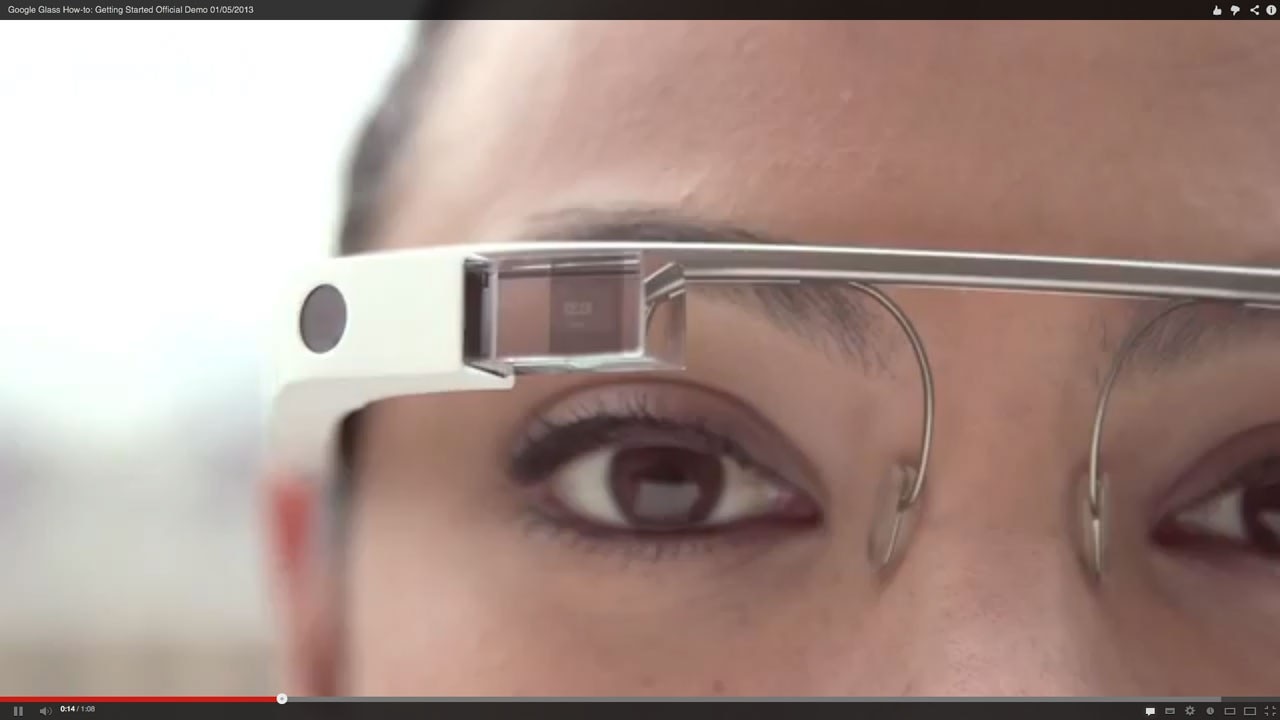
What a technology like Glass brings, then, is more overlaid data, whose cultural history runs deeper, even, than cyberpunk and RoboCop. When in 1901 fantasy author L. Frank Baum imagined a pair of electrical spectacles that would superimpose the moral character of people in view onto their foreheads, he prefaced his story The Master Key with the question: “These things are quite improbable, to be sure, but are they impossible? ” For the next century, computer scientists would toy with prototypes for virtual environments, with Ivan Sutherland’s first primitive binocular-based head-mounted display in 1968, and Lanier and Zimmerman’s data goggles and gloves for gaming in 1989. How, then, to step from “virtual reality” fantasy to real-life application? How to get beyond the bulky set-up of augmented reality pioneer Steve Mann to create a technology whose material—so goes the ideal—will dissolve, while information is made ever-present? Early electronics manufacturers such as Sony predicted in the 1990s that people would want small displays, but it isn’t until now, with the roaming freedom of Wi-Fi, that wearability and portability begin to seem practical.
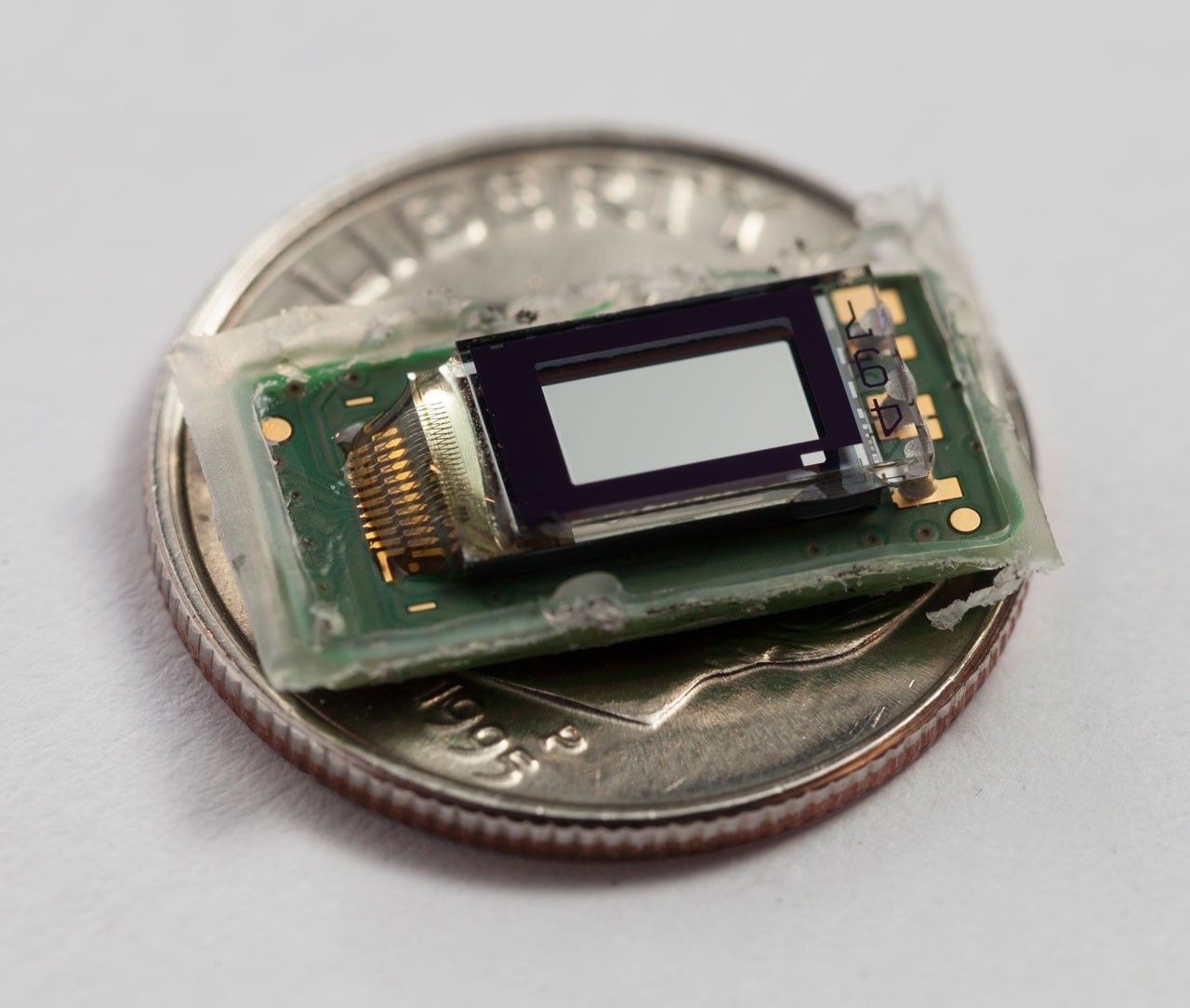
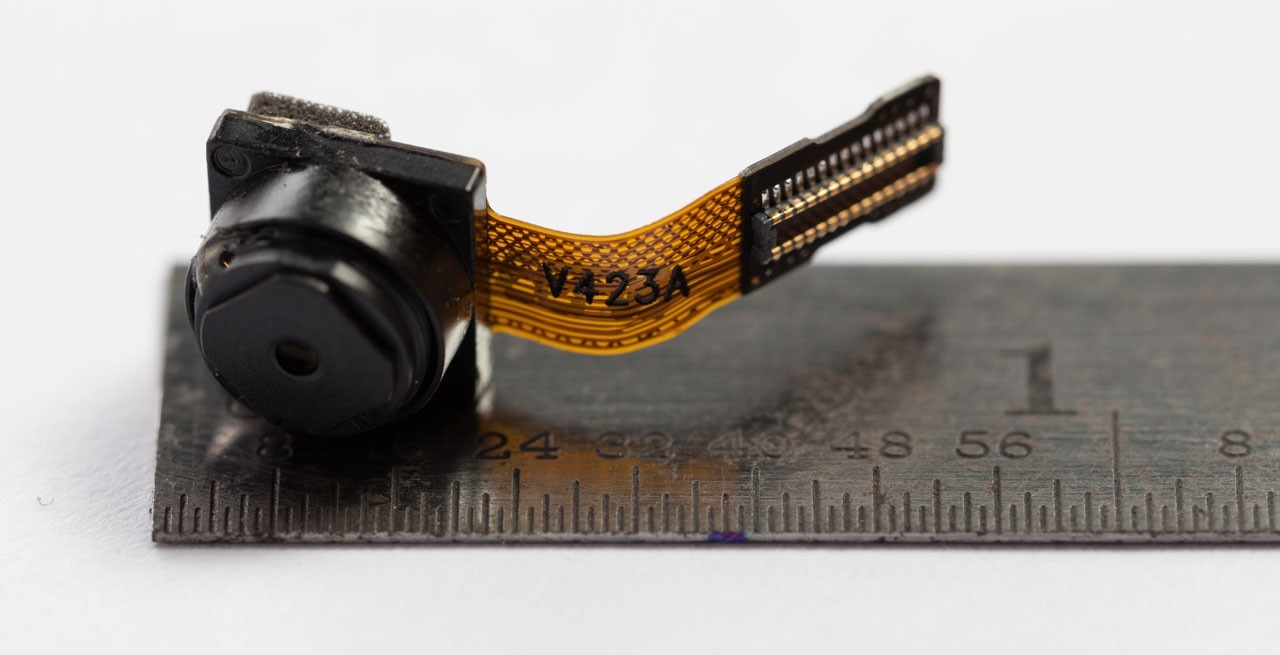
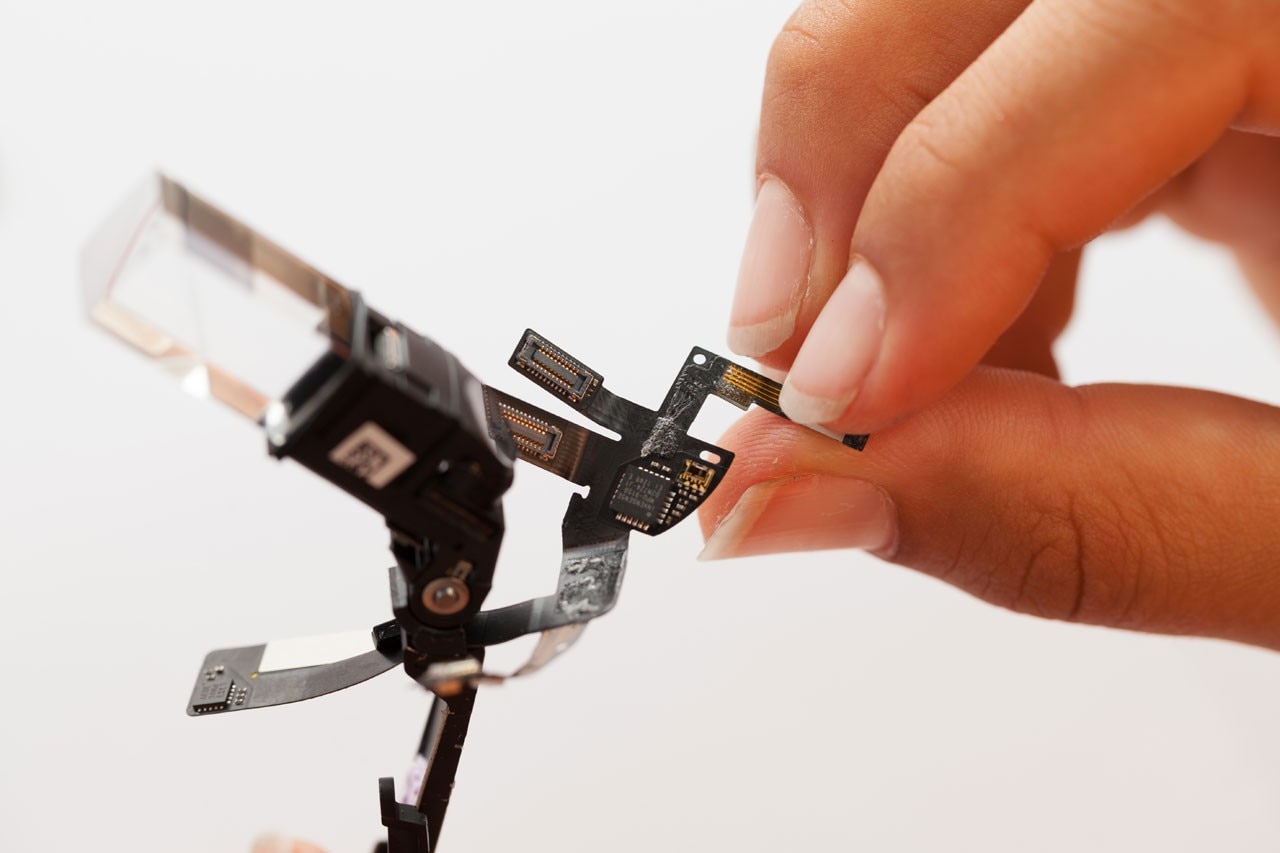
The digital technologies born out of networked societies bring a further break in vision, a shift in optical understanding that is manifest, variously, in machine eyes and embedded cameras, military mapping and satellite images, Google Earth and Street View. The visual repercussions of these technologies are part of what The New Aesthetic [11] takes as its subject. With machine vision, the human perspective is shunted from frame: it is the objects that are given the power to see. We then see what the objects see, or some of it, and the objects “look” right back at us. As James Bridle says, we are left “waving at the machines”. [12]
Glass is just one more instantiation of contemporary shifts in vision. The eye-view camera seems to return us to the human point of view, but it also feeds this point of view back into the machine; Google’s eye looks with you. The machine eye interprets what you see, relaying this information to a network of technologies controlled by Google. As Teju Cole [13] writes on what photography means now: “The neutral and panoptic eye of Google itself becomes the camera.” While the machine eye mostly views the same world as the wearer—apart from those signs, like QR codes, of the machine-readable world—what Google then interprets and mines from this vision remains hidden. Google are known to maximise all given data to improve search, running, for example, Google Books data through search algorithms. Algorithms will surely be run through the image data gained from Glass, to improve search by image, or places on maps. Further, your visual data becomes open to the intrusions of marketing, influencing business strategy as well as improving the machine’s intelligence. Are we ready to hand over the raw data behind our vision?
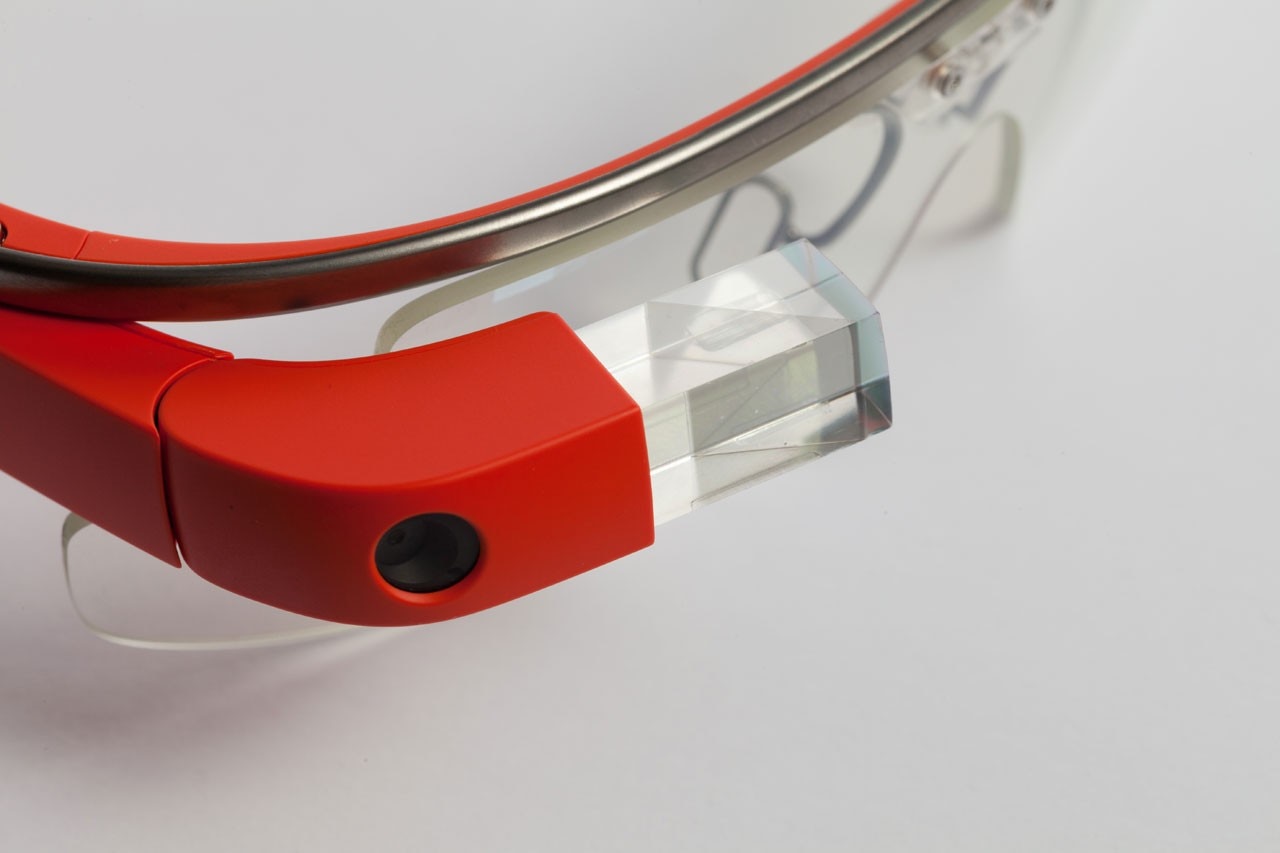
As telephones brought voice to ear, Glass brings eye to eye. Paired with the simulated get-together of the Google Hangout, friends and family members can see from your perspective, as you—so foretells the promo video—climb a rock face, perform a ballet, or, more likely, cook dinner and play with your kids. The documented self intensifies. The breakdown of distance is a well-rehearsed idea in relation to digital media. We already possess a sense
of ambient intimacy with friends, who are physically either near or far from us. The feature of eye-view filming further shrinks the distance from self to other—and silently, the distance from self to machine disappears too.
Tracing a lineage from smartphone image-making, Glass’s footage will focus on food, fitness, the family (oh, and sex); but above all on human faces. This ushers in the further use of face recognition technologies, which, once connected with information about individuals on the network, could make Glass seem not so far from L. Frank Baum’s augmented morality glasses.
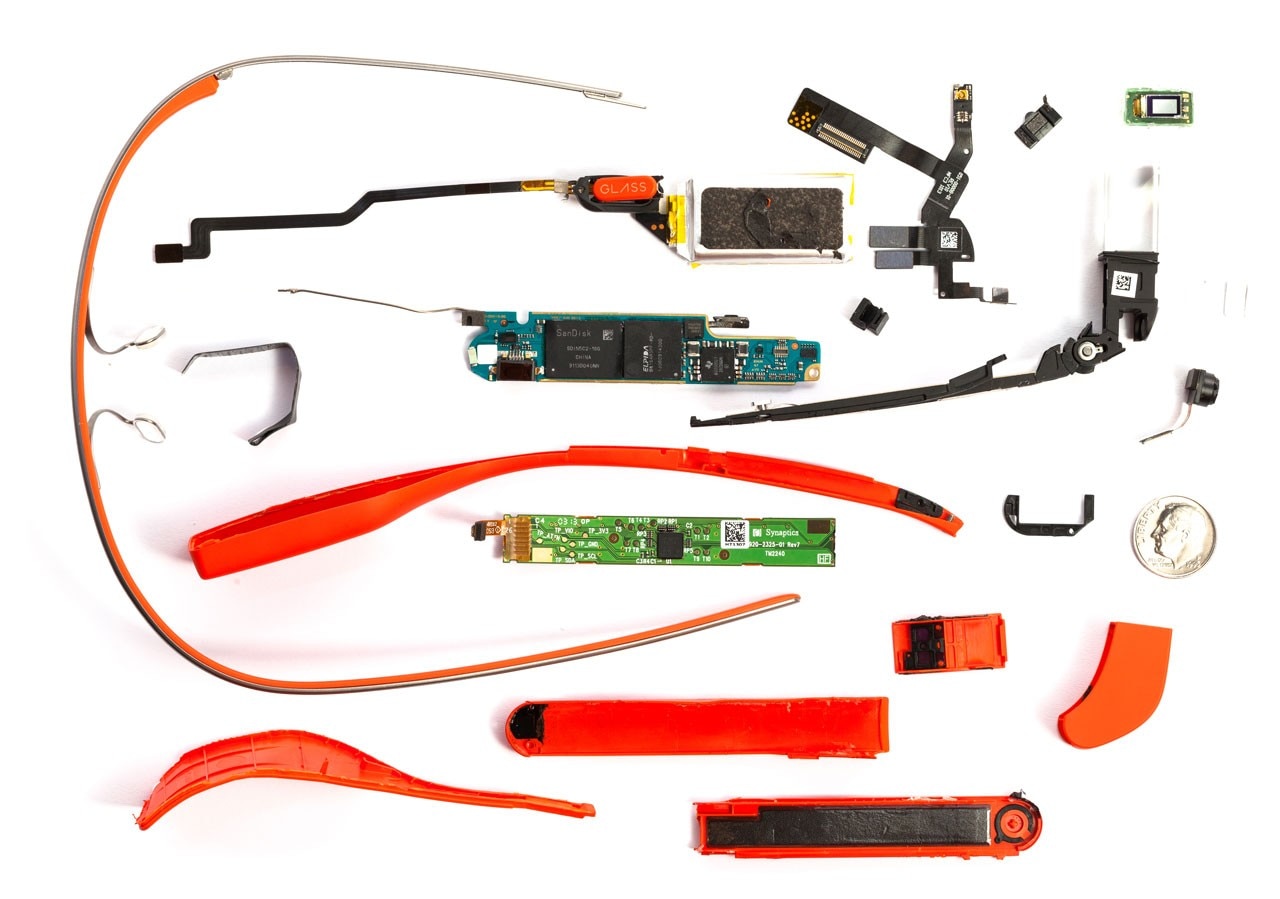
Until wearable technology becomes more widespread and discreet, Glass still poses an intrusion in the world of physical interactions; an almost-cyborg adornment which, for the plain-clothes human, arouses suspicion. When in 1985 the feminist theorist Donna Haraway wrote in A Cyborg Manifesto, “The main trouble with cyborgs is that they are the illegitimate offspring of militarism and patriarchal capitalism,” she believed that the human-machine amalgam could transcend its starting point: “Illegitimate offspring are often exceedingly unfaithful to their origins. Their fathers [14], after all, are inessential.” But Google must remain essential to Glass; it is Google, not God, that becomes the all-seeing Eye.
Like the image of the cardinal wearing spectacles with which we begun, Glass once again raises the question of who is given the power to see. Glass creates a complex layering of gazes: that of the wearer in the world; that of the machine interpreting the world; and that metaphorical gaze of the predictive technology that seems to watch over the wearer. And behind these three, there is Google.
Central to Crary’s discussion of the 19th-century observer is control. In Suspensions of Perception [15] he writes: “Once the empirical truth of vision was determined to lie in the body, vision could be annexed and controlled by external techniques of manipulation and stimulation.” We already live in surveillance societies. We are already on film—and most of the time we don’t notice. But the mass uptake of a technology like Glass would radically alter our exposure to surveillance. Not only in terms of wearers’ ability to film more discreetly than ever before, but also in that users themselves hand over the data behind their vision to a predominant private entity. This is not the state Panopticon, but that of a corporation.

Notes:
1. Vincent Ilardi, Renaissance Vision from Spectacles to Telescopes, the American Philosophical Society, Philadelphia 2006
2. mashable.com
3. www.guardian.co.uk – 10/09/2012
4. berglondon.com/blog – 19/12/2012
5. thesocietypages.org/ cyborgology 21/02/2013
6. dcurt.is/glass
7. thesocietypages.org/ cyborgology 01/03/2013
8. speedbird.wordpress.com – 07/05/2013
9. Mark Graham, Matthew Zook, Andrew Boulton, Augmented reality in urban places: contested content and the duplicity of code, 2012, in Transactions of the Institute of British Geographers, vol. 38, no. 3, 07/2013
10. Jonathan Crary, Le tecniche dell’osservatore. Visione e modernità nel XIX secolo, Einaudi, Torino 2013; Techniques of the Observer: On Vision and Modernity in the Nineteenth Century, MIT 1992
11. new-aesthetic.tumblr.com
12. booktwo.org/notebook/ waving-at-machines
13. thenewinquiry.com/blogs/dtake/ googles-macchia
14. whitemenwearinggoogleglass. tumblr.com
15. Jonathan Crary, Suspensions of Perception. Attention, Spectacle, and Modern Culture, MIT 1999


